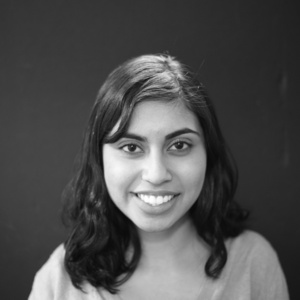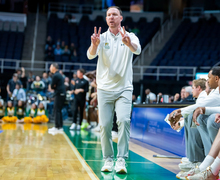Jaipuriar: Student activism movements should assess feasibility of ‘demands’
Student activists: take notes.
THE General Body staged an intense protest at Syracuse University in 2014 and released a 45-page list of demands regarding campus diversity and university policy, raising issues which, at the time, seemed daunting. Now, students and administrators can see intra-university collaboration at work in a report released Monday by the Chancellor’s Workgroup on Diversity and Inclusion that outlines 33 recommendations for ways in which SU can be more socially welcoming.
Meanwhile, Western Washington University is going through a similar phase. WWU activism group “Student Assembly for Power and Liberation” recently published a petition with demands to fight systemic oppression through the creation of a multicultural residence hall, student approval for some faculty hiring decisions and free tuition for any student who has experienced institutional “violence,” among other requests.
Numerous critics have since spoken out against the group’s strategy. The Atlantic’s Conor Friedersdorf — who has written numerous pieces on college politics — called it “self-defeating radicalism.” Robby Soave said in a piece for The Daily Beast that administrators should ignore these calls “to create an almost cartoonishly autocratic liberal thought police on campus.”
But whether these demands are too radical or ambitious is a matter of perspective. When one hasn’t personally experienced the grievances of these students, it isn’t possible to judge if they are asking too much. In this way, the ongoing student resistance at WWU is a microcosm of a crossroads that transcends student movements everywhere: outsiders who are unable to relate can either dismiss these activists completely or over-sympathize to the point of withholding valid criticism.
Critically analyzing activist demands can strengthen social movements and help students create impactful change, rather than just publishing a lengthy list of grievances and giving the university an ultimatum to act.
For instance, the WWU students’ demand for a College of Power and Liberation — a new school dedicated to social justice — is an admirable goal because it could focus on underrepresented communities. However, this would arguably limit enrichment to the select few students interested in that one specialized school. And yet the rest of the university could then just go on, unaffected, which ultimately defeats the purpose of even trying to educate the campus community on social consciousness.
It’s a tough compromise because lofty visions may not always be achievable, but thinking small may just get students to settle. And because of this, there must be balance between ambition and reality. Another caveat of this balance in student activism is using a tone that gets people to listen: speaking up means being bold, yet not too aggressive. There’s a difference between a “DEMAND” and a respectful request to a university that technically doesn’t owe students anything.
Sarah Pralle, an associate professor of political science in the Maxwell School of Citizenship and Public Affairs at SU who supported THE General Body, said the demonstration at SU was a good model for student movements because it first aired its grievances to administrators and governing bodies before hosting the 18-day sit-in.
“Directly going to the streets isn’t always the best strategy,” Pralle said. “You’ve got to be able to ramp it up and you’ve got to hold something in your back pocket. So I think them starting with the normal channels, building some support, building a dialogue across campus (was effective).”
One goal for universities across the country should be that all students, regardless of personal factors like background, race, sex, gender and wealth have an enjoyable and insightful higher education experience. This is especially true if you’ve already experienced a lifetime of institutionalized racism or oppression. For instance, the U.S. Department of Education Office for Civil Rights found in 2014 that black children and children with disabilities are disproportionately disciplined in public schools.
So when it’s time to go off to college, one would imagine it to be an escape — a worldly and cultured environment, filled with diverse and open-minded people. When that doesn’t end up being the reality, it is understandable for students to unleash their frustrations to the respective institutions.
But before tackling an entire institution and stepping on the gas, racing full-steam ahead, student activists should pause and examine their immediate environment. Rather than trying to imitate other recent social movements, like the ones at the University of Missouri and Ithaca College, activists should calmly assess what they truly want and what they can realistically accomplish for their respective campus.
“Go big or go home” is a popular piece of advice thrown around, but when it comes to creating real change, maybe you don’t have to “go big.” Because even if rules and regulations on paper are drastically changed overnight, public opinion will always take time to evolve.
Rashika Jaipuriar is a freshman broadcast and digital journalism major. Her column appears weekly. She can be reached at rjaipuri@syr.edu and followed on Twitter @rashikajpr.
Published on March 22, 2016 at 11:57 pm






